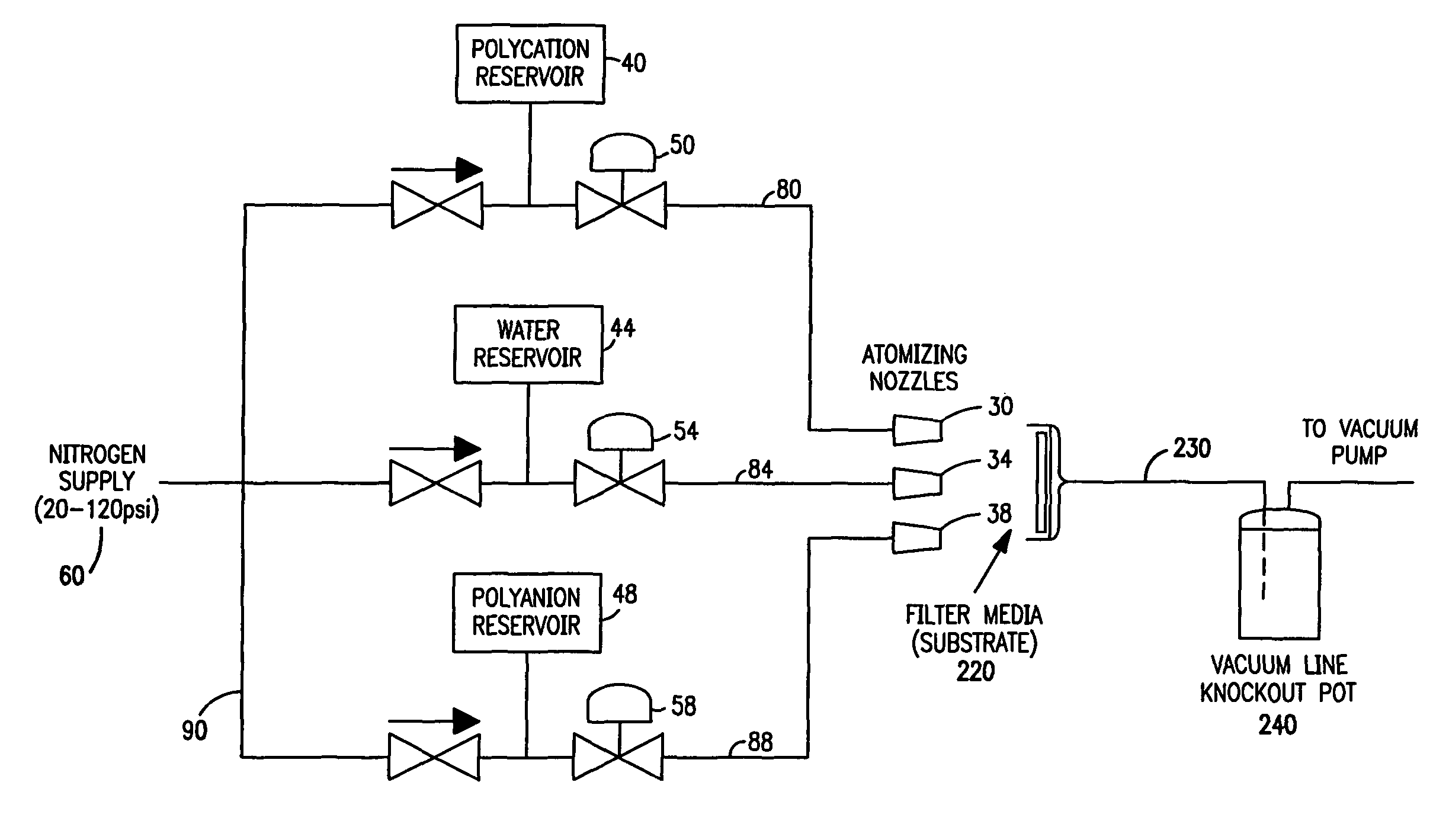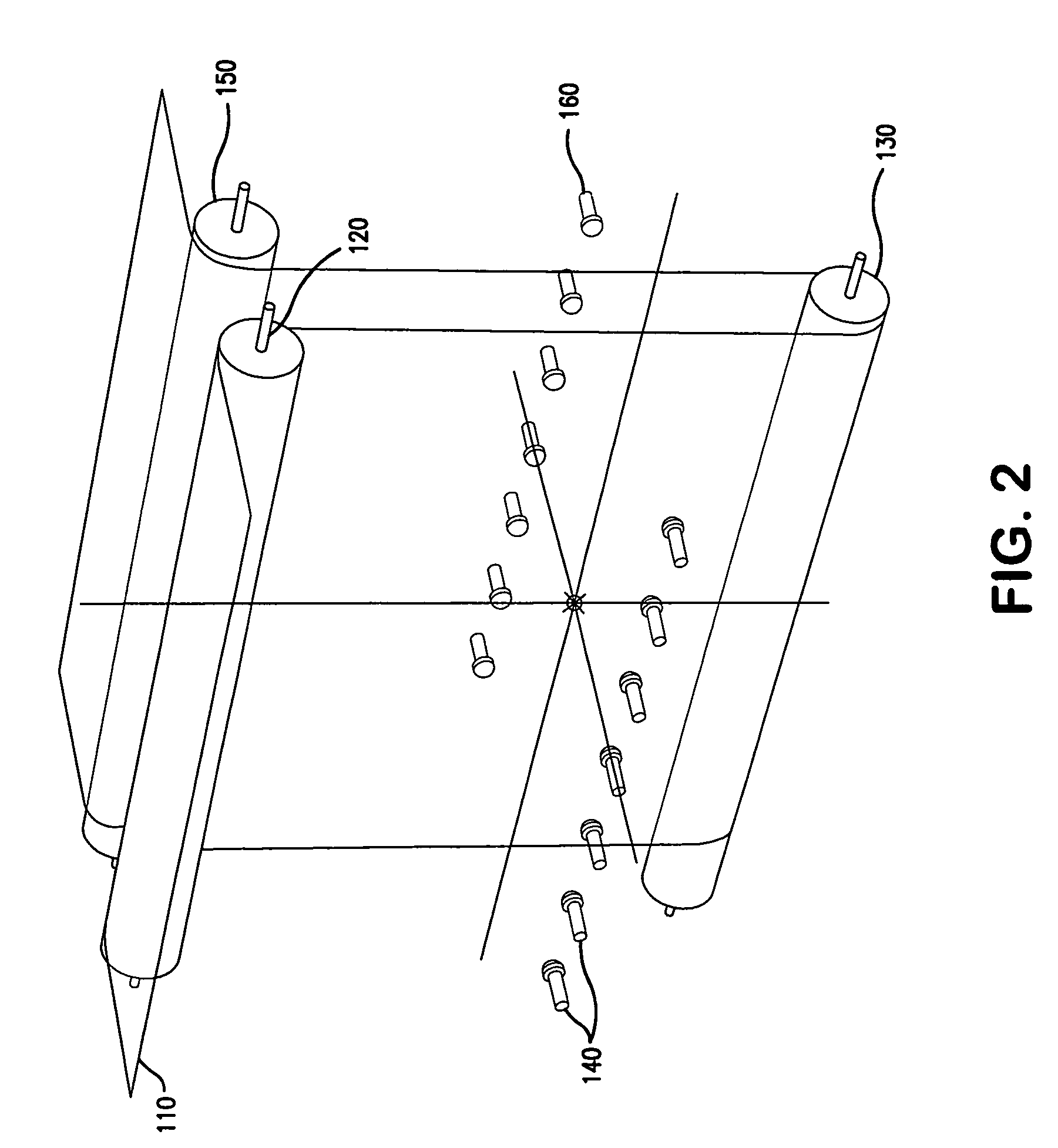Automated layer by layer spray technology
a technology of spraying technology and polymer, applied in the direction of coatings, membranes, transportation and packaging, etc., can solve the problems of affecting the degree of transfer from the rinse bath to the subsequent polyelectrolyte solution, the individual layer pair may take upwards of thirty minutes to deposit, and the choice of polyelectrolyte solvent is thereby typically limited. , to achieve the effect of being scalabl
- Summary
- Abstract
- Description
- Claims
- Application Information
AI Technical Summary
Benefits of technology
Problems solved by technology
Method used
Image
Examples
Embodiment Construction
[0020]FIG. 1 represents one embodiment of the present invention. An automated spray system 10 is depicted which can be used to coat substrate 20 using a layer by layer methodology. In the preferred embodiment, at least three atomizing nozzles 30, 34, 38 are used to spray the substrate 20. Each of these nozzles is in communication with a corresponding reservoir 40, 44, 48. These reservoirs are used to hold the materials that are conventionally held in baths for traditional LbL dipping processes. Thus, polyelectrolytes of opposing charge are held in two of the reservoirs 40, 48, while the remaining reservoir is used to hold water or other suitable fluid for the rinse cycle. Those skilled in the art will appreciate that although reservoirs 40, 44 and 48 are shown, other embodiments can be used that provide each nozzle in communication with a suitable supply of appropriate fluid. Preferably, the rinse fluid used is deionized water (DI). The contents of these reservoirs are pressurized, ...
PUM
| Property | Measurement | Unit |
|---|---|---|
| pressure | aaaaa | aaaaa |
| pressure | aaaaa | aaaaa |
| time | aaaaa | aaaaa |
Abstract
Description
Claims
Application Information
 Login to View More
Login to View More - R&D
- Intellectual Property
- Life Sciences
- Materials
- Tech Scout
- Unparalleled Data Quality
- Higher Quality Content
- 60% Fewer Hallucinations
Browse by: Latest US Patents, China's latest patents, Technical Efficacy Thesaurus, Application Domain, Technology Topic, Popular Technical Reports.
© 2025 PatSnap. All rights reserved.Legal|Privacy policy|Modern Slavery Act Transparency Statement|Sitemap|About US| Contact US: help@patsnap.com



